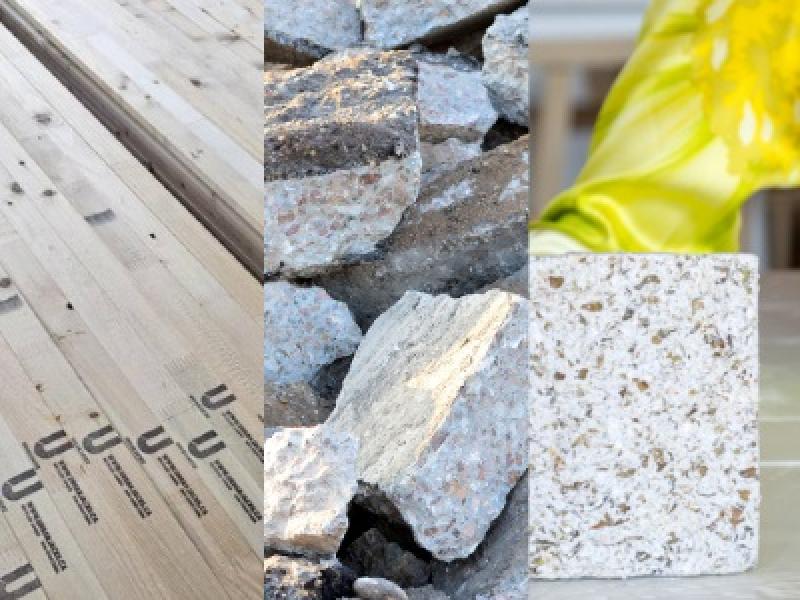
Jo-Anne St. Godard, the executive director of the Circular Innovation Council, says the Canadian economy should turn from a linear model to a circular one that fixates on sustainable consumption and can also maintain economic growth.
It is a message Godard is promoting during the group’s inaugural Circular Economy Month campaign held in October. It is an initiative to encourage Canadians to look at the benefits of a circular economy for the environment, business and society.
The Circular Innovation Council is a Canadian non-profit that formerly went by the Recycling Council of Ontario. It promotes the transition from a linear economy to a circular economy and for people to consider the environmental and societal impacts of the production, consumption habits and practices of today.
“I think this year we’re really focused on communications on just socializing the term and growing the understanding of every Canadian on what a circular economy is and what our opportunities to benefit from this model (are),” said St. Godard.
It has found support from people like the Minister of Environment and Climate Change Steven Guilbeault who endorsed Circular Economy Month on Oct. 6.
What is a circular economy?
The circular economy is described as an examination of the system of production and consumption and contemplates how consumers can maintain or protect natural resources. It also considers the full value of natural resources by keeping them in the economy for as long as possible and deriving more value out of products.
It is “a counter to the current linear economy” where natural, often finite resources are extracted to make products, packaged and generally discarded with a small portion becoming inputs into new production where their value is maintained, according to St. Godard.
A circular economy can protect natural resources and minimize the environmental impact from energy production and carbon dioxide while preserving biodiversity, St. Godard said. It also considers social impacts like making the local economy a priority, how we treat people in the supply chain and looking globally.
Some ideas for promoting a circular economy include repairing products rather than repurchasing, using products that are made up of recycled material, supporting companies that offer take-back of products and sharing products and programs like tool libraries or ride share programs. It encompasses designing consumer products to be more durable, longer-lasting, reusable, repairable and easily recyclable.
Balancing the economy and the environment
By adopting the ideas of a circular economy, St. Godard believes that economic prosperity is compatible with a healthy environment, unlike the proponents of the degrowth movement.
“It actually is an economic model that doesn’t require us to give up prosperity or economic gains in our quest to reduce our economic impacts or improve our social situation. It actually builds an economy, so it aligns economic prosperity while delivering on our social and environmental goals and is very positive in that regard.”
The circular economy is a $4 trillion opportunity according to St. Godard. She said innovation as an engine of economic prosperity is at the heart of a circular economy, and Canada is well-situated to lead on innovation because of its innovative population and the attention given from academics, political leaders and business leaders on the circular economy.
As Canada is a resource-based economy, St. Godard said Canada’s economy and businesses depends on maintaining resource sustainability.
It is also an opportunity to support sustainable local businesses, employment and local supply chains, St. Godard said.
Because Canadians are one of the worst per capita offenders in terms of waste and carbon dioxide emissions, St. Godard said the benefits of a circular economy should resonate deeply with Canadians.
As 45 per cent of the carbon dioxide emissions that must be reduced to meet Canada’s climate plans are embedded in consumer products and energy consumption, St. Godard said it puts a priority on looking at how we produce and the energy used to make those goods.
How to achieve a circular economy
St. Godard pointed to Canadian municipalities taking the initiative in declaring a circular economy and changing their practices, and the startups and scaleups with “great ideas" that are "pushing the envelope.”
Role models in the circular economy can be found in Europe she said, particularly Finland, Scandinavia, the Netherlands and France.
With Canadian government policies pushing forward on circular economy principles like bans on plastic bags and single-use plastics, St. Godard said regulatory interventions are needed to steer the market. She said some other helpful policies would include moving toward electric vehicles, energy efficiency buildings and carbon pricing at a product-level to require carbon transparency and tracking.
Though the COVID-19 pandemic created a deluge of single-use waste from plastic takeout containers and disposable masks, St. Godard said the pandemic ended up promoting a circular economy. The waste “given us pause for thought,” she said, with home delivery revealing wasteful consumption habits and climate disasters putting it closer to home. “I think we also understood that we need another way of living,” she said.
Unlike the people who argue that climate change is largely a problem fueled by corporations, St. Godard said consumers have the power to make a sustainable future.
“The companies only exist because we purchase from them. We own the buying power. Industry and businesses will change their behaviour based on the way we consume; what it is they have to offer. I’m not saying that citizens and residents have all the responsibility, but we have a lot more power and influence than sometimes we think we have,” she concluded.










